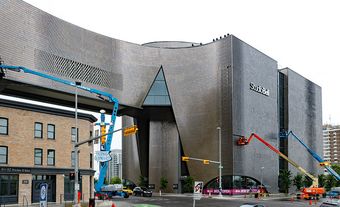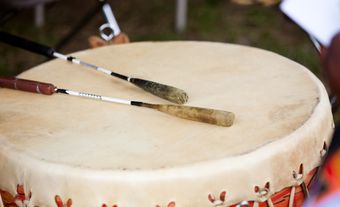The Juno Awards are Canada’s music recording industry awards. They have been administered by the Canadian Academy of Recording Arts and Sciences (CARAS) since 1975, when the awards ceremony was first telecast. The gala’s popularity has grown significantly since 1995, when it was transformed from an industry function into a public event at an arena concert venue. In the early 2000s, the “Juno Week” ceremony was expanded to include public entertainment events; these include the Songwriters' Circle, JunoFest, Juno Fan Fare and the Juno Cup charity hockey game. The Juno Awards also encompass the Canadian Music Hall of Fame. It was founded by CARAS in 1978.

Origins
The origin of the Juno Awards was an annual series of reader polls first conducted in 1964 by the Canadian music industry trade magazine RPM. RPM editor and publisher Walt Grealis and record label executive Stan Klees started the poll. Their aim was to help promote and raise the public profile of musical artists in Canada. From 1964 to 1969, the winners’ names were published in RPM at the end of each year. Awards were presented for the first time in 1970 in a ceremony at Toronto’s St. Lawrence Hall. Originally called Gold Leaf Awards, they were renamed the Juno Awards in 1971. They were named after the Roman goddess and in tribute to Pierre Juneau, the first chairperson of the Canadian Radio-television and Telecommunications Commission (CRTC). He was responsible for introducing the Canadian content (CanCon) quota to Canadian radio that year.
Founding of CARAS
RPM readers continued to select the Juno Award winners until 1975. The Canadian Academy of Recording Arts and Sciences (CARAS) was formed expressly for the purpose of overseeing the annual ceremony. Voting was reserved primarily for CARAS members (known as delegates). Membership was open to people working in the recording industry. Also in 1975, the awards gala was telecast for the first time on CBC. This allowed the event to achieve a much higher profile. In 1982, the show drew more than two million viewers. In 2009, it drew more than four million. CTV has broadcast the ceremony since 2002.
In 1978, CARAS established the Canadian Music Hall of Fame. Oscar Peterson and Guy Lombardo were the first inductees. In recognition of Grealis’s efforts to promote the industry, CARAS founded the Walt Grealis Special Achievement Award in 1984. It acknowledges members of the Canadian music community who have played a significant role in building a thriving domestic industry. Broadcaster J. Lyman Potts was the inaugural recipient.

Selection Process
Specific award categories and their criteria have changed from year to year to reflect changes and developments in the music industry. In 1964, there were 16 categories; in 2014, there were 42. The selection process also has varied over the years, depending on the category. Music released during the year-long eligibility period is submitted to CARAS by artists or their representatives. It is designated for particular categories to be considered for nomination. Typically, a panel of judges determines the nominees in each category in a round of voting in October. A second round of voting to determine the winner takes place in late January. These votes are cast by all CARAS delegates except in some of the genre-specific categories; these are determined by panel. The nominees in every category are announced to the media in February. The winners are announced at the awards ceremony in March.
The panels of judges for each category change every year. They are comprised of people from different facets of the music industry and different regions of the country. Each category is overseen by an advisory committee. It ensures that all the submissions meet the required criteria.

Since 1993, the nominations for eight specific categories have been determined at least in part by domestic sales. The nominees for International Album of the Year and Album of the Year are based solely on sales. The nominees for Artist of the Year, Group of the Year, Breakthrough Artist of the Year and Breakthrough Group of the Year are determined by an equal combination of sales data, judges’ votes and online data compiled by the analytics company Next Big Sound. Nominees for Pop Album of the Year and Rock Album of the Year are determined by an equal combination of sales data and judges’ votes. Votes cast by CARAS members determine the winners of these eight categories.
The nominees for the Juno Fan Choice Award, introduced in 2003, are ranked by a combination of domestic sales and online data compiled by Next Big Sound. From 2003 to 2011, the Juno Fan Choice nominees consisted of the top five artists ranked according to these criteria; in 2012, the category was expanded to include 10 nominees. The winner is chosen by an online vote open to the public.
Awards Ceremony and Events
The Juno Awards were held outside of Toronto for the first time in 1991, at Vancouver’s Queen Elizabeth Theatre. The awards ceremony grew significantly beginning in 1995. That year, it was transformed from a function attended only by industry and media into a public event at an arena concert venue. This move coincided with and capitalized on the surge in popularity of Canadian music artists both domestically ( Tragically Hip, Blue Rodeo, 54-40, etc.) and internationally (Alanis Morissette, Shania Twain, Sarah McLachlan, etc.). (See also Canadian Music on a Roll.) The first ceremony in this format, at Hamilton’s Copps Coliseum, attracted about 10,000 fans.

The 25th anniversary of the Juno Awards was celebrated in 1996 with the release of both a book and a four-disc box set entitled Oh What a Feeling. It was the first box set ever to be certified diamond for sales of over one million copies in Canada. Similar box sets followed in 2001 and 2006 to mark the 30th and 35th anniversary of the Junos; the latter was certified platinum. An annual Juno Awards compilation CD was launched in 2003.
Vancouver hosted the awards show for a second time in 1998, moving it to the much larger GM Place. The growing popularity of the Junos made the move to arenas permanent. The galas alternated between Hamilton and Toronto from 1999 to 2001. In 2002, CARAS began moving the show across the country, with St. John’s as that year’s host. This also marked the first time that the awards were given out over two evenings. Most of the awards were presented in front of an industry audience on Saturday. A selection of higher-profile awards were then given out on the televised show on Sunday in between an increased number of performances.
Since 2001, special public entertainment events have been held on the annual Juno weekend. The Songwriters’ Circle — based on an annual event of the same name at the East Coast Music Awards (ECMA) and co-sponsored by the CMPA, SAC and SOCAN — was established in 2001. It brings together artists for an informal and intimate concert of songs and stories. The proceeds typically go to support Band Aid — a program that works to improve music education in Canada by giving individual grants to selected schools across the country.
In 2002, CARAS launched JunoFest and Juno Fan Fare to help connect Canadian musicians to their fans. JunoFest is a public, ticketed two-day event that presents concerts in local venues of the host city. FanFare is a free interactive public event that allows fans to meet with their favourite bands and artists. In 2004, Blue Rodeo’s Jim Cuddy founded the Juno Cup, a charity hockey game featuring Canadian musicians playing against former NHL stars. The game raises funds for MusiCounts, which administers the Band Aid program.
Other Canadian Music Awards
The Juno Awards are effectively, though not exclusively, devoted to the English sector of Canada’s recording industry. They are paralleled in Quebec by the Félix Awards, which began in 1979. (See also ADISQ.) Other regional music associations started their own awards to help raise the profile of their respective local industries and artists. Since 1989, the Eastern provinces have hosted the annual East Coast Music Awards (known until 1991 as the Maritime Music Awards). In 2002, the Prairie Music Alliance (representing Manitoba, Saskatchewan and Alberta) expanded to incorporate the music industry associations of BC and the Yukon, thus creating the Western Canadian Music Alliance (WCMA). The WCMA has hosted the annual Western Canadian Music Awards since 2003.
See also Canadian Music Hall of Fame; Canadian Independent Music Association (CIMA); Canadian Country Music Association; Music Industries; Music of Indigenous Peoples in Canada.

 Share on Facebook
Share on Facebook Share on X
Share on X Share by Email
Share by Email Share on Google Classroom
Share on Google Classroom


